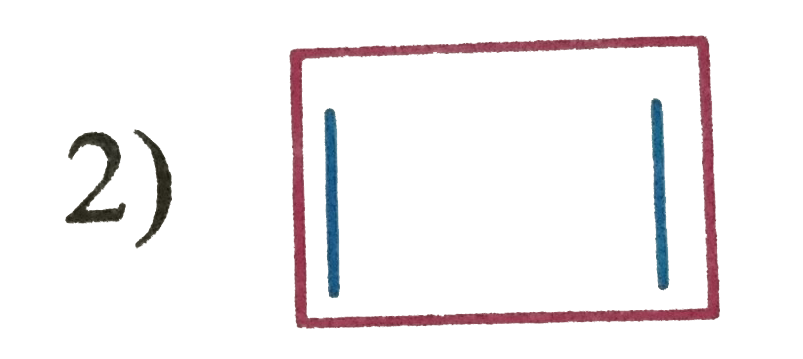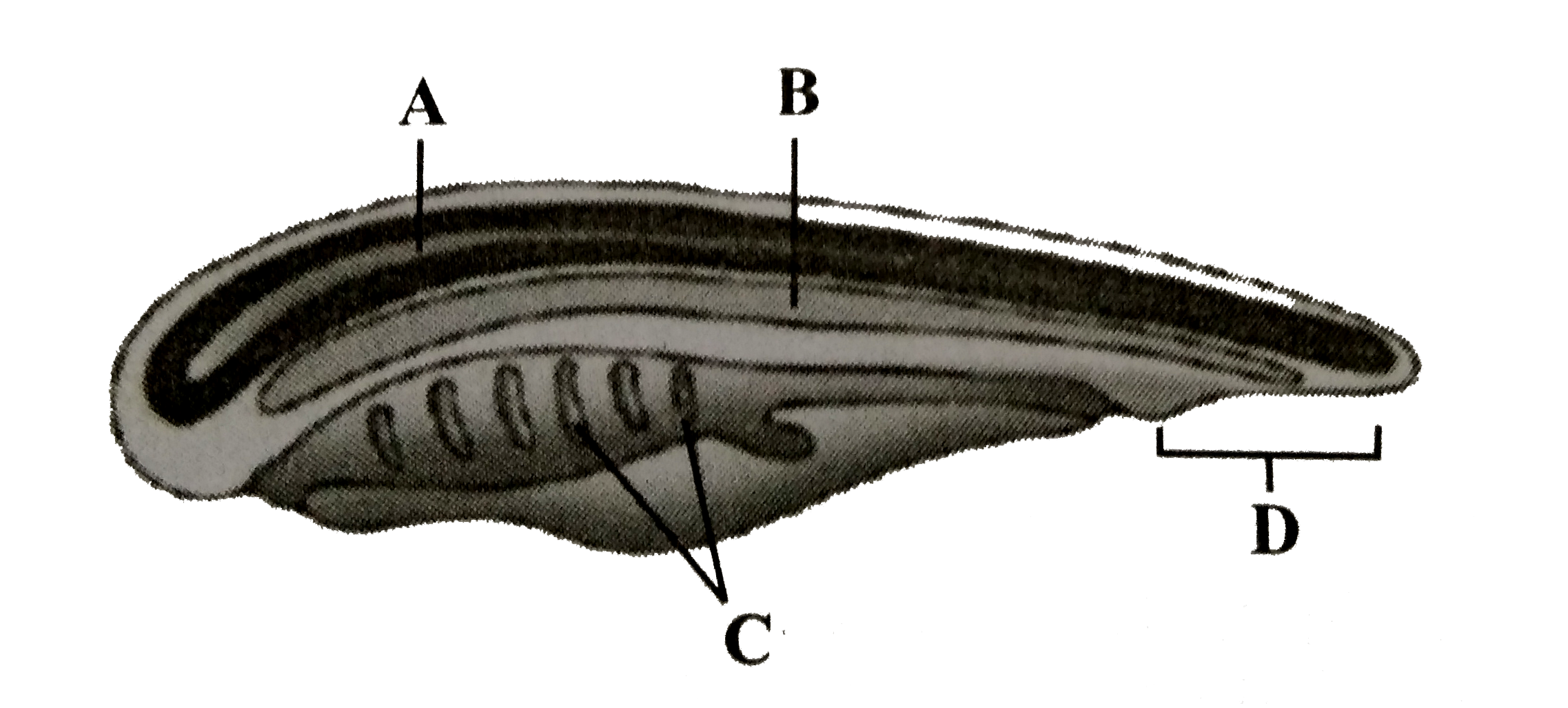Four structures are given in options (a) to (d) . Examine them and select the aromatic structures.




The correct Answer is:A, C
To determine which of the given structures are aromatic, we need to follow the criteria for aromaticity. Here’s a step-by-step solution:
Step 1: Understand the Criteria for Aromaticity
A compound is considered aromatic if it meets the following criteria:
1. Planarity: The molecule must be planar, allowing for effective overlap of p-orbitals.
2. Conjugated Double Bonds: The molecule must have a continuous ring of p-orbitals, which typically means alternating single and double bonds.
3. Hückel's Rule: The molecule must have 4n+2 π electrons, where n is a non-negative integer (0, 1, 2, ...).
Step 2: Analyze Each Structure
Let’s examine each structure one by one based on the criteria above.
Structure 1: Cyclopropene with a Positive Charge
- Planarity: Yes, all carbons are sp² hybridized.
- Conjugation: There is one double bond, but it does not have conjugated double bonds.
- π Electrons: There are 2 π electrons (for n=0, 4(0)+2=2).
- Conclusion: This structure is aromatic.
Structure 2: A Compound with 8 π Electrons
- Planarity: Yes, all carbons are sp² hybridized.
- Conjugation: There are conjugated double bonds.
- π Electrons: There are 8 π electrons (for n=2, 4(2)+2=10).
- Conclusion: This structure is anti-aromatic (not aromatic).
Structure 3: Bifenyl
- Planarity: Yes, both benzene rings are planar and sp² hybridized.
- Conjugation: Each benzene ring has conjugated double bonds.
- π Electrons: Each benzene ring has 6 π electrons (for n=1, 4(1)+2=6).
- Conclusion: This structure is aromatic.
Structure 4: A Compound with 4 π Electrons
- Planarity: Yes, all carbons are sp² hybridized.
- Conjugation: There are conjugated double bonds.
- π Electrons: There are 4 π electrons (for n=1, 4(1)+2=6).
- Conclusion: This structure is anti-aromatic (not aromatic).
Final Conclusion
The aromatic structures from the given options are:
- Structure 1 (Cyclopropene with a Positive Charge)
- Structure 3 (Bifenyl)
A compound is considered aromatic if it meets the following criteria:
1. Planarity: The molecule must be planar, allowing for effective overlap of p-orbitals.
2. Conjugated Double Bonds: The molecule must have a continuous ring of p-orbitals, which typically means alternating single and double bonds.
3. Hückel's Rule: The molecule must have 4n+2 π electrons, where n is a non-negative integer (0, 1, 2, ...).
Let’s examine each structure one by one based on the criteria above.
- Planarity: Yes, all carbons are sp² hybridized.
- Conjugation: There is one double bond, but it does not have conjugated double bonds.
- π Electrons: There are 2 π electrons (for n=0, 4(0)+2=2).
- Conclusion: This structure is aromatic.
- Planarity: Yes, all carbons are sp² hybridized.
- Conjugation: There are conjugated double bonds.
- π Electrons: There are 8 π electrons (for n=2, 4(2)+2=10).
- Conclusion: This structure is anti-aromatic (not aromatic).
- Planarity: Yes, both benzene rings are planar and sp² hybridized.
- Conjugation: Each benzene ring has conjugated double bonds.
- π Electrons: Each benzene ring has 6 π electrons (for n=1, 4(1)+2=6).
- Conclusion: This structure is aromatic.
- Planarity: Yes, all carbons are sp² hybridized.
- Conjugation: There are conjugated double bonds.
- π Electrons: There are 4 π electrons (for n=1, 4(1)+2=6).
- Conclusion: This structure is anti-aromatic (not aromatic).
The aromatic structures from the given options are:
- Structure 1 (Cyclopropene with a Positive Charge)
- Structure 3 (Bifenyl)
Topper's Solved these Questions
- HYDROCARBONSBook:NCERT EXEMPLARChapter:HYDROCARBONSExercise:Short Answer Type Questions
Explore 20 Videos
- HYDROCARBONSBook:NCERT EXEMPLARChapter:HYDROCARBONSExercise:Matching The Columns
Explore 4 Videos
- HYDROCARBONSBook:NCERT EXEMPLARChapter:HYDROCARBONSExercise:Long Answer Type Questions
Explore 4 Videos
- ENVIRONMENTAL CHEMISTRYBook:NCERT EXEMPLARChapter:ENVIRONMENTAL CHEMISTRYExercise:Long Answer Type
Explore 5 Videos
- HYDROGENBook:NCERT EXEMPLARChapter:HYDROGENExercise:LONG ANSWER TYPE QUESTIONS
Explore 8 Videos
Similar Questions
Knowledge Check
Four structures are given in option (1) to (4). Examine them and select the aromatic structure.
A B
B C
C D
D
Four structures are given in option (1) to (4). Examine them and select the aromatic structure.
A B
B C
C D
D
Figure 19 .1 7 shows human urinary system with structures labeled A-D. Select the option which correctly identifies them and gives their characteristics and/or functions.
 AB → Pelvis → Broad, funnel-shaped space inner to hilum, directly connected to the loop of Henle.BC → Medulla → The inner zone of kidney and con- tains complete nephrons.CD → Cortex → The outer part of kidney and does not contain any part of nephrons.DA → Adrenal gland → Located at the anterior part of kidney. Secretes catecholamine which stimulates glycogen breakdown.
AB → Pelvis → Broad, funnel-shaped space inner to hilum, directly connected to the loop of Henle.BC → Medulla → The inner zone of kidney and con- tains complete nephrons.CD → Cortex → The outer part of kidney and does not contain any part of nephrons.DA → Adrenal gland → Located at the anterior part of kidney. Secretes catecholamine which stimulates glycogen breakdown.
The three structural formulae A, B and C are given here. Identify them and select the correct option.

View SolutionThe three structural formulae A, B and C are given here. Identify them and select the correct option.

View SolutionResonance energy will be more if
(a) canonical structures are equivalent than if canonical structures are non-equivalent.
(b) molecule is aromatic than if molecule is not aromatic.
View SolutionGiven figures (i), (ii), (iii) and (iv) represent certain parts/structures of animals. Identify the pairs of structures that are analogous to each other and select the correct option.

View SolutionAnimals belonging to Phylum Chordata are fundamentally characterised by the presence of structures noted as A, B C and D. Identify them and select the correct option.

View Solution

